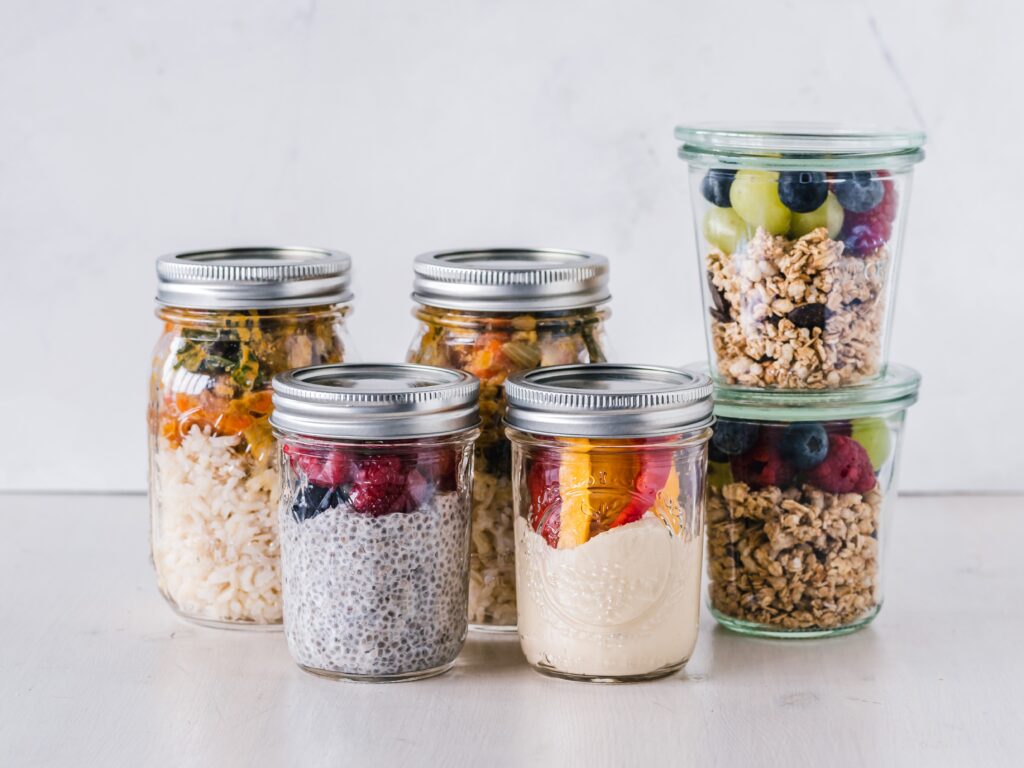
In this article, we will describe ten essential rules for adopting a healthy and balanced eating throughout the day. By following these tips, you will learn how to eat healthily and maintain a well-rounded diet every day.
To achieve optimal health through your diet, it is crucial to reduce your consumption of processed foods and prioritize fresh, natural, and unprocessed options rich in nutrients. Fruits, vegetables, oilseeds, legumes, whole grains, meats, fish, and olive oil should be the main components of your meals.
To make sustainable changes, take it step by step over several weeks to gradually improve your diet and move towards better health. Incorporate the following ten tips into your eating habits, committing to integrating one new goal each week for the next ten weeks.
While healthy eating is relatively simple, the rise of fad diets and trendy eating patterns has confused me. Use this guide with ten tips for healthy eating to navigate through the noise and focus on what truly matters.
1. Limit processed food consumption
Avoid the following processed products to maintain a healthy diet:
- Sodas, fruit juices, and sweetened beverages
- Salted or sweetened cookies, chips, and snack cakes
- Breakfast cereals and cereal bars
- Sweets, pastries, and chocolate with less than 70% cocoa content
- Prepared dishes like pizzas, quiches, and packaged pasta meals
- Industrial desserts and yogurts
- Bread, brioche, and rusks
- Jams and spreads like Nutella
- Prepared sauces such as bolognese, ketchup, mayonnaise, and pesto
- Deli meats
Ideally, these products should not exceed 20% of your daily calorie intake. Industrially processed foods are often high in calories and low in essential nutrients like vitamins, minerals, antioxidants, and fiber. Their consumption is associated with weight gain, disrupted blood sugar regulation, increased hunger, and a higher risk of developing chronic inflammatory diseases like diabetes, hypertension, obesity, and cardiovascular problems.
2. Emphasize healthy and natural foods
Focus on incorporating the following natural and unprocessed foods into your diet:
- Vegetables: broccoli, spinach, carrots, tomatoes, arugula, lettuce, cabbage, radishes, sweet potatoes, zucchini, beets, mushrooms, etc.
- Fruits: blueberries, blackberries, raspberries, apples, pears, kiwis, oranges, bananas, etc.
- Fish: salmon, mackerel, sardines, tuna, etc.
- Organic and free-range eggs
- Meats: chicken, turkey, pork, beef, lamb, etc.
- Nuts and seeds: almonds, walnuts, hazelnuts, pistachios, flaxseeds, chia seeds, pumpkin seeds, etc.
- Whole grains: quinoa, rice, buckwheat, whole wheat, spelled, rye, etc.
- Legumes: lentils, beans, peas, etc.
Make sure that approximately 80% of your diet consists of these healthy, natural foods. People who consume such foods are less likely to develop conditions like diabetes, hypertension, cancer, cardiovascular disease, overweight or obesity, inflammatory diseases, or premature aging.
3. Create balanced meals
A balanced meal should include the following components:
- Cooked or raw vegetables, comprising half of your plate
- Whole grains such as brown rice, quinoa, or buckwheat
- Animal or vegetable proteins like meat, fish, eggs, or legumes
- Healthy fats such as coconut oil or olive oil for cooking and seasoning
- Spices and herbs like turmeric, pepper, salt, curry, thyme, and parsley for flavor and added nutrients
- Water
Strive to maintain this composition for both lunch and dinner. However, remember that balance should be maintained throughout the week. Adjust the proportions of vegetables, grains, and other components according to each meal’s needs.
4. Reduce sugar intake (5% or less of daily caloric intake)
Follow these tips to minimize sugar consumption:
- Avoid table sugar (white and brown), syrup, and honey
- Reduce the amount of added sugar in cereals, yogurt, coffee, or tea
- Avoid soda and fruit juices, and opt for water instead
- Consume whole fruits or frozen fruit instead of sugary desserts
- Check food labels and choose products with the least amount of added sugars (sucrose, glucose, fructose, syrups, cane, starch, maltodextrin, molasses, etc.)
- Avoid sugary desserts like sweetened yogurts, pastries, compotes, and smoothies
- Be cautious with so-called “healthy” products in the “diet” section
- Halve the recommended amount of sugar in your recipes
- Consider using natural sweeteners like stevia or xylitol
The World Health Organization (WHO) recommends limiting sugar intake to an average of 5% per day, which equates to approximately 6 sugar cubes or 25 grams of sugar. Since industrial products have become prevalent, sugar is present in 74% of ultra-processed foods.
5. Include whole grains in your diet
- Incorporate the following whole grains into your meals:
- Brown, red, and black rice
- Buckwheat
- Quinoa
- Oat flakes
- Whole grain bread or pasta (rye, spelled, whole wheat, etc.)
- Barley
- Bulgur (cracked wheat)
- Millet
Whole grains offer a complete package of health benefits as they contain B vitamins, iron, copper, zinc, magnesium, and antioxidants. Unlike refined grains, which have been stripped of their nutrients, whole grains help maintain a healthy weight, reduce the risk of diabetes, and regulate blood cholesterol levels. The fiber content in whole grains results in a lower glycemic index, which helps control blood sugar spikes and improves satiety regulation.
6. Increase plant protein intake
Opt for the following sources of plant proteins:
- Legumes: beans, lentils, peas
- Seeds: flaxseeds, chia seeds, pumpkin seeds
- Soy products: tofu, miso, tempeh
- Spirulina
- Nutritional yeast
- Quinoa
- Nuts and almonds
Replace your meat, fish, or egg-based meals with plant proteins three to seven times a week. Consuming a variety of plant proteins ensures you obtain all the essential amino acids, unlike animal proteins that naturally possess a complete amino acid profile. Note that becoming vegetarian or vegan is not necessary to maintain a healthy diet. Meat from animals raised in open-air environments and fed on grass and flaxseed offers a nutritionally beneficial profile, as do fatty fish.
7. Stay hydrated with water
Adhere to the following recommendations to ensure adequate hydration:
- Drink 1.5 to 2 liters of water per day
- Adjust your water intake based on your gender, outdoor conditions, and physical activity level
- Increase intake when consuming coffee or alcohol, as they have diuretic effects
- Begin your day with a large glass of water
- Carry a water bottle with you throughout the day, especially at work
- Drink water before, during, and after physical activities
- If you feel hungry, drink a glass of water, as thirst is often mistaken for hunger
- If plain water is unappealing, opt for herbal teas without added sugar or tea
- Consider other drinks like sodas, juices, alcohol, and coffee as occasional “pleasure” drinks
8. Create a shopping list
Making a shopping list can simplify healthy eating. It helps prevent impulsive choices and temptations presented by supermarket aisles and product packaging. Consider the following tips when creating a “healthy” shopping list:
- Create a specific list of processed foods you need to avoid wandering unnecessarily and being tempted
- Spend more time in the fresh produce aisles
- Prioritize seasonal fruits and vegetables, varying the colors as prices are often lower
- Note down the foods required for balanced meals in each category
- Buy staple foods like cereals, legumes, oilseeds, meat, and fish in bulk, as they often offer better prices per kilo
- Take advantage of promotions, even on fresh products, and freeze them for preservation
- Avoid shopping while hungry, as it can lead to less healthy choices
9. Read food labels
Make it a habit to read labels and ingredient lists when purchasing processed products. This practice helps avoid products with hidden sugars and excessive chemical additives. Follow these guidelines when reading food labels:
- Avoid products with long ingredient lists containing unfamiliar and complicated words
- Check that the first three ingredients listed are not sugar, glucose, syrup, fructose, salt, or chemical names with numbers
- Do not solely rely on packaging claims like “gluten-free,” “whole grain,” “vitamin enriched,” “0%,” or “no sugar added.” These claims do not guarantee a quality and healthy product
- Examine the amount of sugar in the nutritional information
- Avoid products containing trans fats and hydrogenated fats
10. Maintain the pleasure of eating
Eating healthy should be enjoyable rather than a constant source of frustration. Avoid long-term adherence to restrictive diets, as they can have adverse effects. Here are some tips for maintaining a healthy and pleasurable eating experience:
- Prioritize pleasure in eating as your primary goal
- Eat until you feel satisfied but not excessively full
- Do not eliminate any healthy food category from your diet
- Periodically restrict calorie intake, such as through intermittent fasting
- Adjust your food intake based on your level of physical activity
- Include occasional “pleasure” foods or snacks, either weekly or monthly
- Avoid rushing the process of dietary changes to prevent discouragement and frustration
- Do not follow diets that hinder your social life
- Minimize time spent in the kitchen
- Spend quality time at the table with family to enjoy each other’s company


